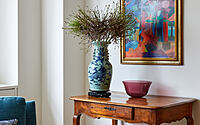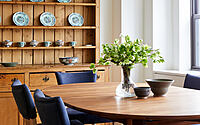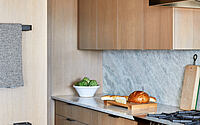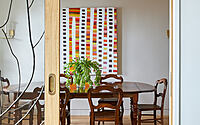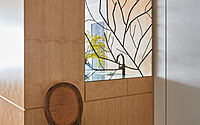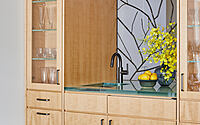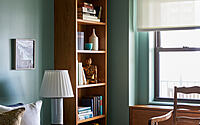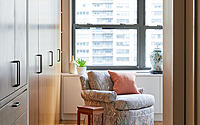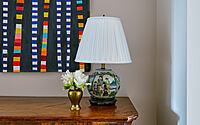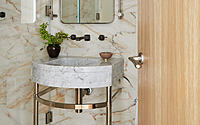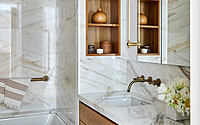Lincoln Towers Apartment by Studio ST Architects
Lincoln Towers Apartment, located in New York City, is a modern 3,500 square foot apartment designed by Studio ST Architects and Maggie Rosenblatt Design.
This newly renovated space was designed with a natural, muted palette and is filled with the couple’s eclectic and stylish collection of vintage furniture and modern art. The challenge was to create a home that merged the couple’s two different aesthetic styles. This project is the perfect example of how two separate spaces can be merged together to create an open, spacious, and light-filled contemporary home. The result is a cohesive, flowing space filled with artistic elements that punctuate and define the spaces.

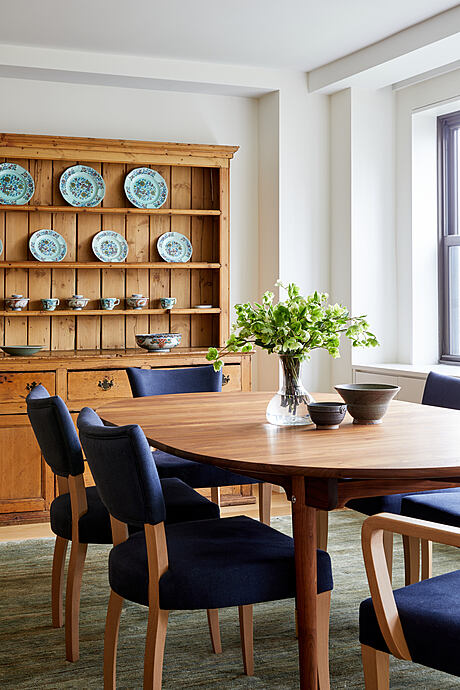
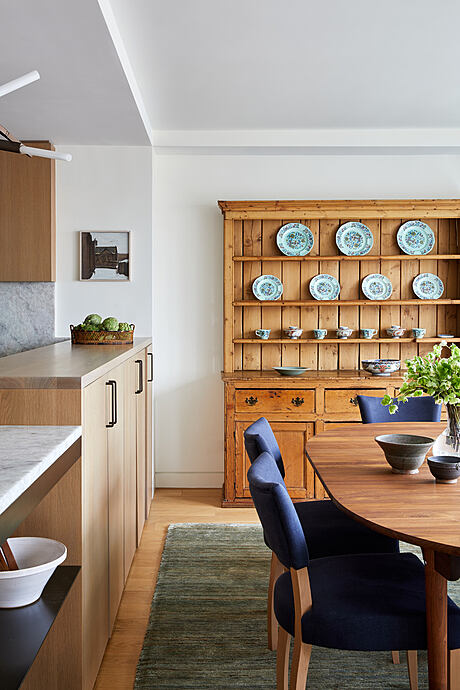
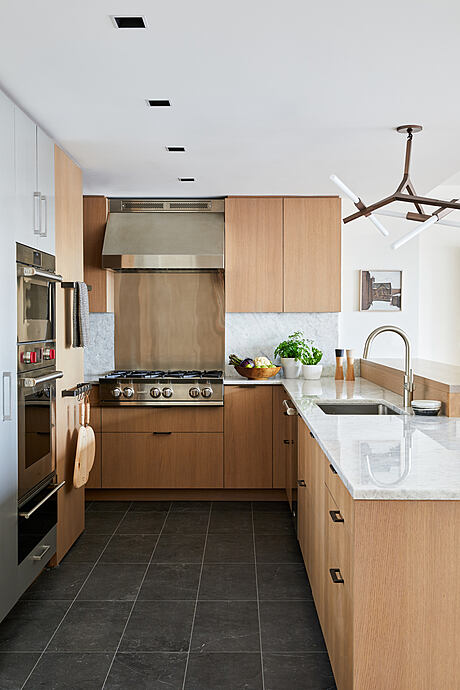
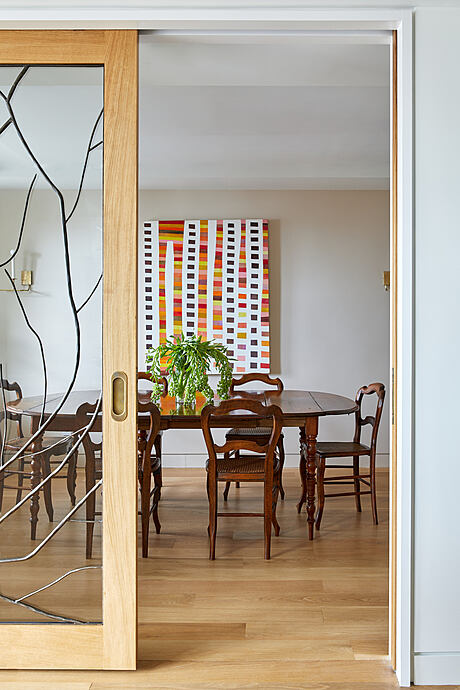


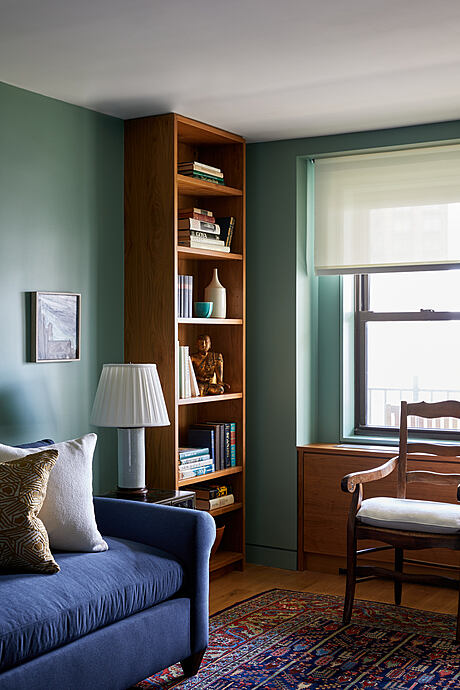
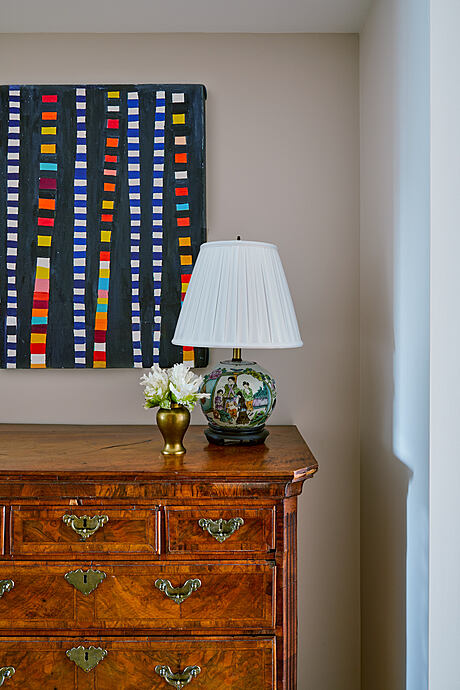
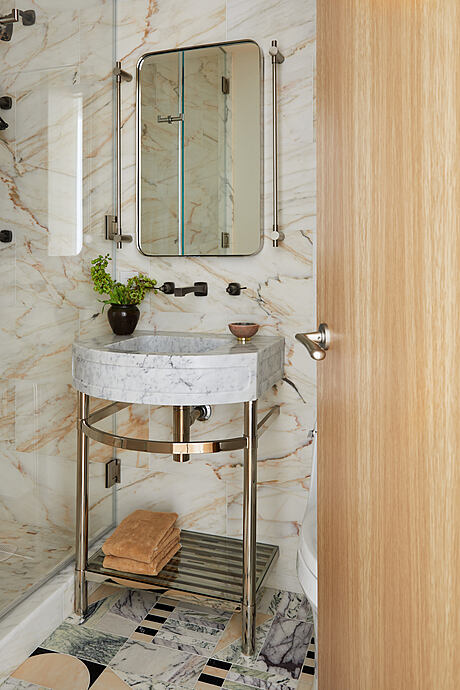
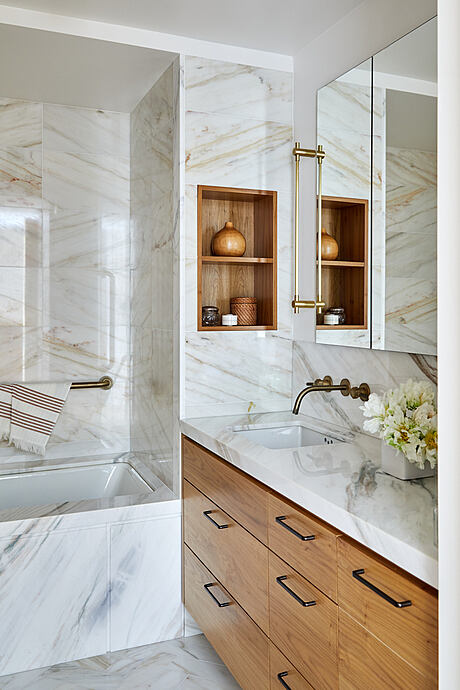
About Lincoln Towers Apartment
Creating a Home Together: Studio ST Architects and Maggie Rosenblatt Design
Studio ST Architects, a women-owned business, collaborated with Maggie Rosenblatt Design to create a home for a recently married couple on the Upper West Side of Manhattan out of three apartments (2,860 square feet/265.6 square meters).
A Clean, Muted Palette: Green, Off-White, Pale Yellow, and Taupe
The newly renovated space uses a natural, muted, palette including green, off white, pale yellow and taupe, which form a clean backdrop for the owner’s eclectic and stylish collection of vintage furniture and modern art. Featured works include Gustavo Ojeda, “Midtown Manhattan”, Christopher Dunlap, Richard Toglia, “Looking Out”, and Theresa Hackett, “Aquatic Dance.”
Expanding the Space: An Entry Foyer, Living Room, and More
Architect Esther Sperber, founder of Studio ST Architects, gutted and joined two separate apartments in the post war building, reimagining them into one open, spacious, light-filled, contemporary home. The resulting 3,500 square foot, light filled apartment provides a cohesive design that combines the downtown East Village artistic sensibility of one partner with the utilitarian taste of the other. There is now a gracious new entry foyer and gallery, an expansive living room, a formal dining room, and a large eat-in kitchen, as well as a primary suite plus three bedrooms, three bathrooms, and a laundry room. The former adjacent studio apartment was purchased to serve as a separate office/retreat.
Combining Styles: An Oak Bar, a Fireplace, and More
The challenge of this project was to create a beautiful, comfortable and spacious apartment that did not feel like it was a combination of separate units. An artisan-made oak bar with open brass branch detail allows the light to flood in while still providing some sense of separation. A matching oak-veneer built-in cabinet above a gel burning fireplace creates a new focal point for the living room. The generously proportioned L-shaped kitchen in muted white oak cabinetry replaced a narrow galley kitchen. Designer Maggie Rosenblatt kept much of the homeowners’ antique and vintage furniture pieces but reupholstered them with pops of color for a fresh, contemporary design.
Fresh and Cohesive: A Haven for the Couple
The architect suggested knocking the adjoining wall down converting it into the spacious primary suite — the old galley kitchen became the primary bathroom and large walk-in closet. The new and spacious primary suite is a private haven for the couple and features a luxury on suite bath with a marble soaking tub and countertop. Pocket doors, echoing the brass, branch design of the bar, connect the kitchen to a more formal dining room, decorated with Asian art.
East Village Style and Country French: The Perfect Blend
The couple is thrilled with the results, particularly the creative solutions and ingenious adaptations to structural challenges within the coop building. This includes working around structural columns to create closets and installing the ventless fireplace where pipes could not be moved. The apartment feels like a home which is also an art gallery with museum grade track lighting illuminating the showpieces. The result is a cohesive, open and flowing space, with artistic elements that punctuate and define the spaces. Most of the art works the homeowners collected were from the mid-80’s, East Village art scene. They also collected country French and English antiques from the antique shops that used to prevail in the north-west end of Bleecker St. in the West Village.
Photography by Kirsten Francis
Visit Studio ST Architects
Visit Maggie Rosenblatt Design

